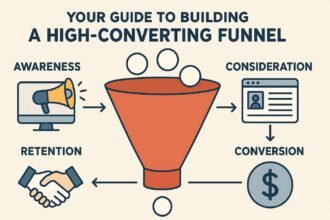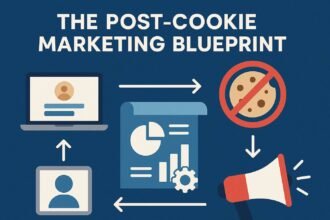For more than a decade, HubSpot has been the undisputed king of inbound marketing. It didn’t just sell software — it sold the dream of an all-in-one growth engine that could handle marketing, sales, and service in one place.
The Rub
But here’s the rub:
- Prices have crept up into enterprise-only territory.
- The dreaded “contact tier” model punishes growth instead of rewarding it.
- Many businesses pay for features they never touch.
- And once you’re in, getting out feels like escaping quicksand.
This has fueled a long-running myth: the search for the “HubSpot Killer.” For years, it was just talk. Competing tools were either too narrow (great email but no CRM), or too clunky to stand a chance.
Now, the market has shifted. SaaS has matured. Competitors are sharper, cheaper, and hungrier. The question is no longer if an alternative exists, but which type of alternative makes sense for you.
What Makes a HubSpot Killer?
Not every email or CRM tool works. A competitor must deliver on six key pillars to compete with HubSpot:
Pillars and Why They Matter
- A strong CRM core – All of your customer data in one place, neat, flexible, and simple to use.
- More advanced automation – Multi-step workflows, lead scoring, triggers, and segmentation that are as good as HubSpot’s engine.
- Tools for full-stack sales – Pipelines, quotes, scheduling, and reporting are all linked to CRM.
- Features for service and support – A shared inbox, a ticketing system, live chat, and a knowledge base that people can use on their own.
- Great UX – If it’s hard to use, no one will use it. The interface needs to be quick, easy to use, and fun.
- Transparent pricing – No hidden paywalls, no punishing contact tiers, just clear and scalable plans.
If a tool can’t deliver on most of these, it’s not a “HubSpot Killer.”
Meet the Challengers
Instead of one slayer swooping in, we’re seeing different species of competitors, each with its own strengths.
1. Big Companies that Put Automation First
Best for: SMB marketers who are very familiar with automation.
Examples: ActiveCampaign, Keap
Strengths: Brilliant workflow builders, flexible automations, CRM tightly linked with email.
Why they win: More powerful automation at lower cost than HubSpot.
Trade-off: CRM depth is good, but not as enterprise-level as Salesforce or Zoho.
2. Ecosystems that Focus on CRM
Best for: Companies that are led by salespeople and need a lot of CRM power.
Examples: Salesforce and Zoho One
Strong points: A rock-solid CRM, in-depth reporting, and mastery of the sales pipeline.
Highlight: The best thing about Zoho One is that you get more than 40 apps for a low price, including CRM, accounting, HR, and marketing.
Trade-off: The learning curve is steep, and the user experience isn’t as smooth as HubSpot’s.
3. Disruptors that are Based on UX
Best for: Startups and tech companies that are flexible and value speed and ease.
Examples: Tools that are modern, backed by venture capital, and have AI-native workflows.
Strengths: Beautiful interfaces, super fast, and able to work together (like Notion/Airtable meets CRM).
Why they win: They are made to work the way modern teams do.
Trade-off: The depth of features may not be as good as the older giants.
4. Champions of Open Source
Best for: Businesses that want to be in charge and don’t like being locked in with a vendor.
Example: Mautic
Strengths: You own your stack, you can have as many contacts as you want, and you have complete freedom.
Why they win: No paywalls for features, code that can be changed, and integration on your terms.
Trade-off: You take care of hosting, updates, security, and development costs in exchange.
How to Escape the HubSpot Trap
Thinking about jumping ship? Don’t do it blind. Here’s a useful checklist for moving:
- Do a feature audit and make a list of the HubSpot features you actually use.
- Make a list of things you need and things you want. Your scorecard for other options.
- Try out the top 2–3 candidates. Don’t just look at demo slides; test real workflows.
- Figure out the real TCO (Total Cost of Ownership) by adding up the costs of setup, training, and integrations.
- Make a plan for moving your data → Before the final move, clean, map, and test.
So… Has the Killer Arrived?
Yes and no.
No single platform has dethroned HubSpot. The king is still alive.
But the kingdom has changed. Businesses now have real, mature alternatives in every direction.
- Want deep automation at SMB prices? You’ve got it.
- Want a full CRM empire? It’s out there.
- Want slick UX for a nimble team? Take your pick.
- Want control at the code level? Open-source has your back.
For the first time in years, businesses aren’t forced into HubSpot’s expensive, one-size-fits-all model. You can now pick the platform that matches your budget, team, and growth stage.
That freedom? That’s the real killer.












